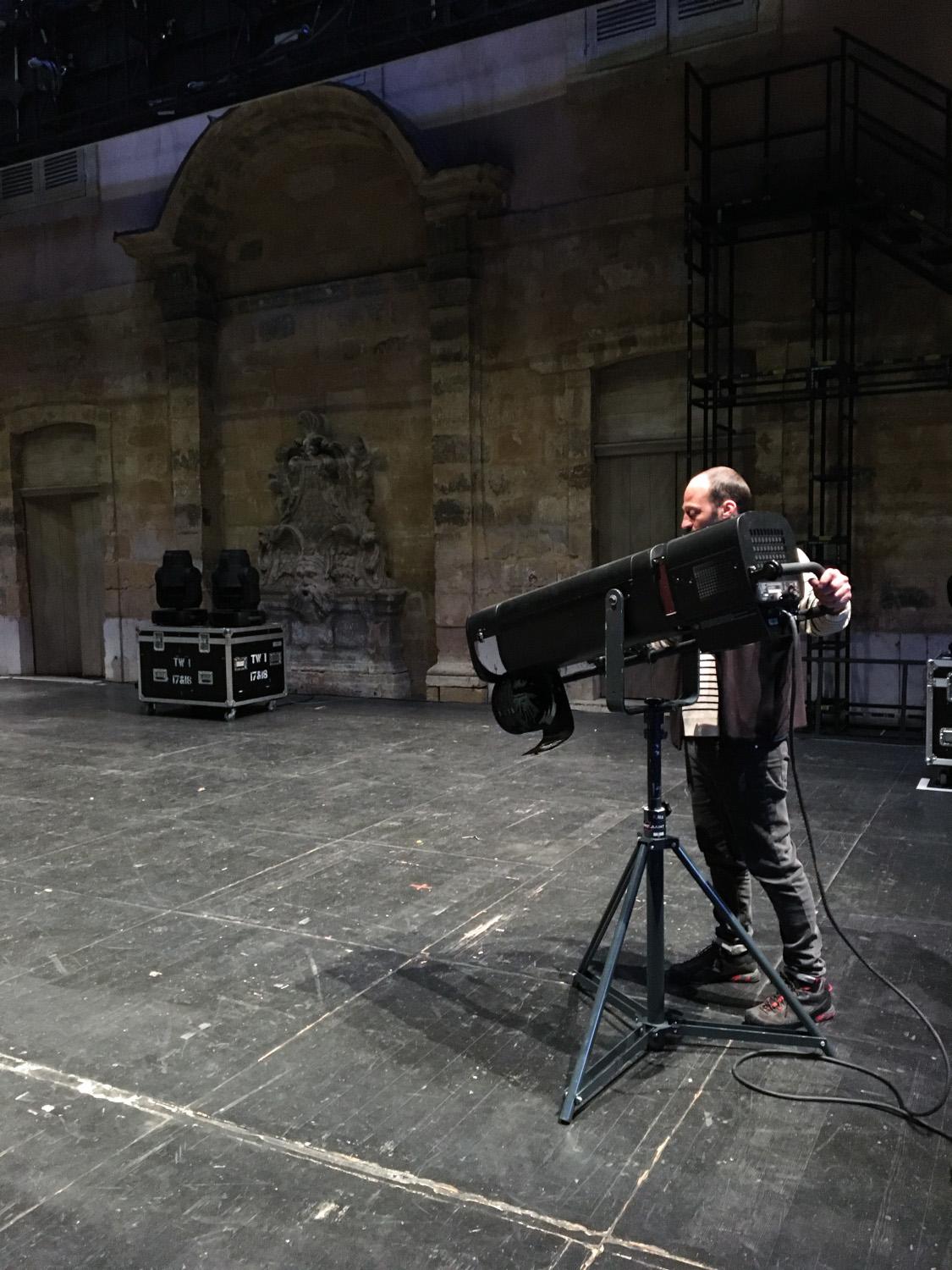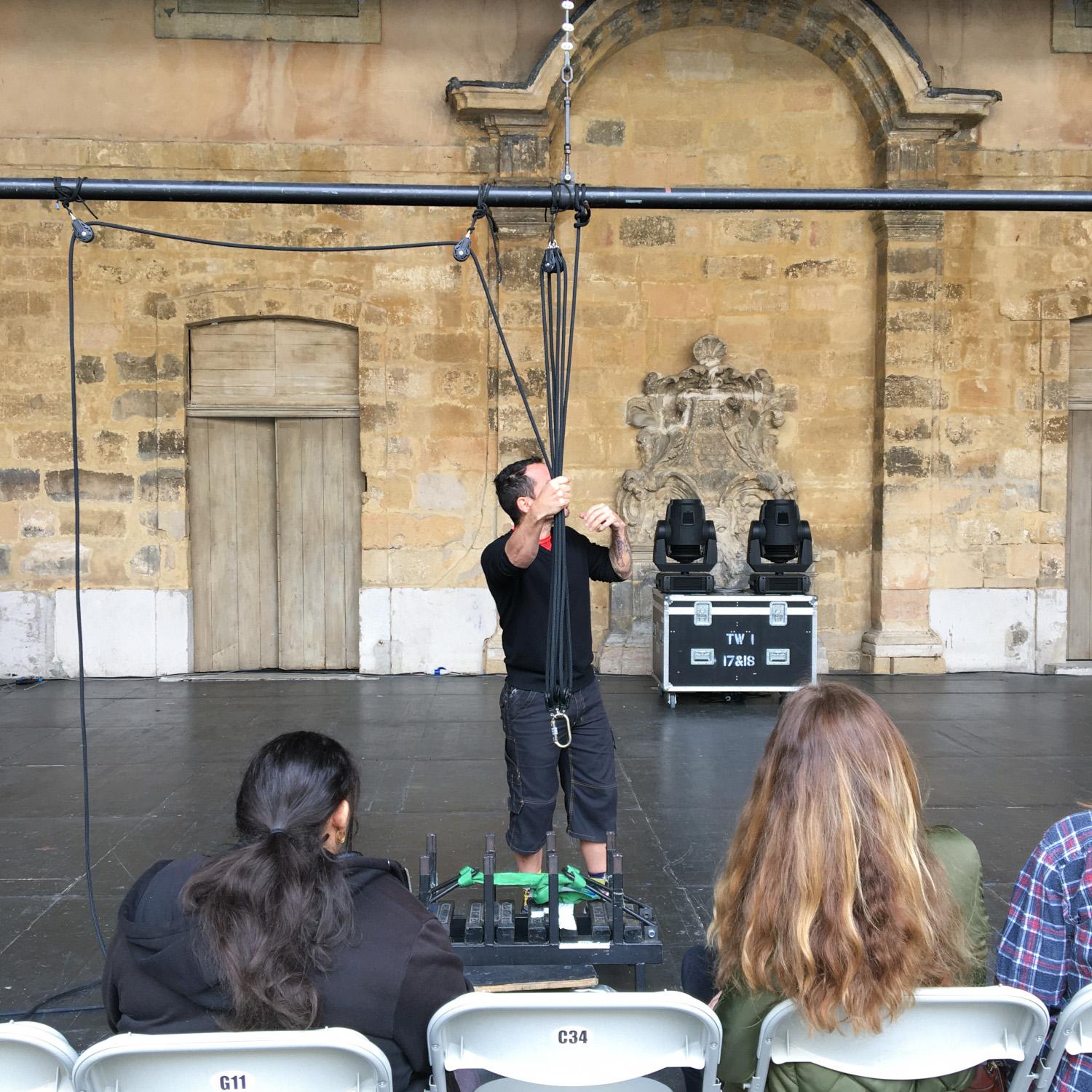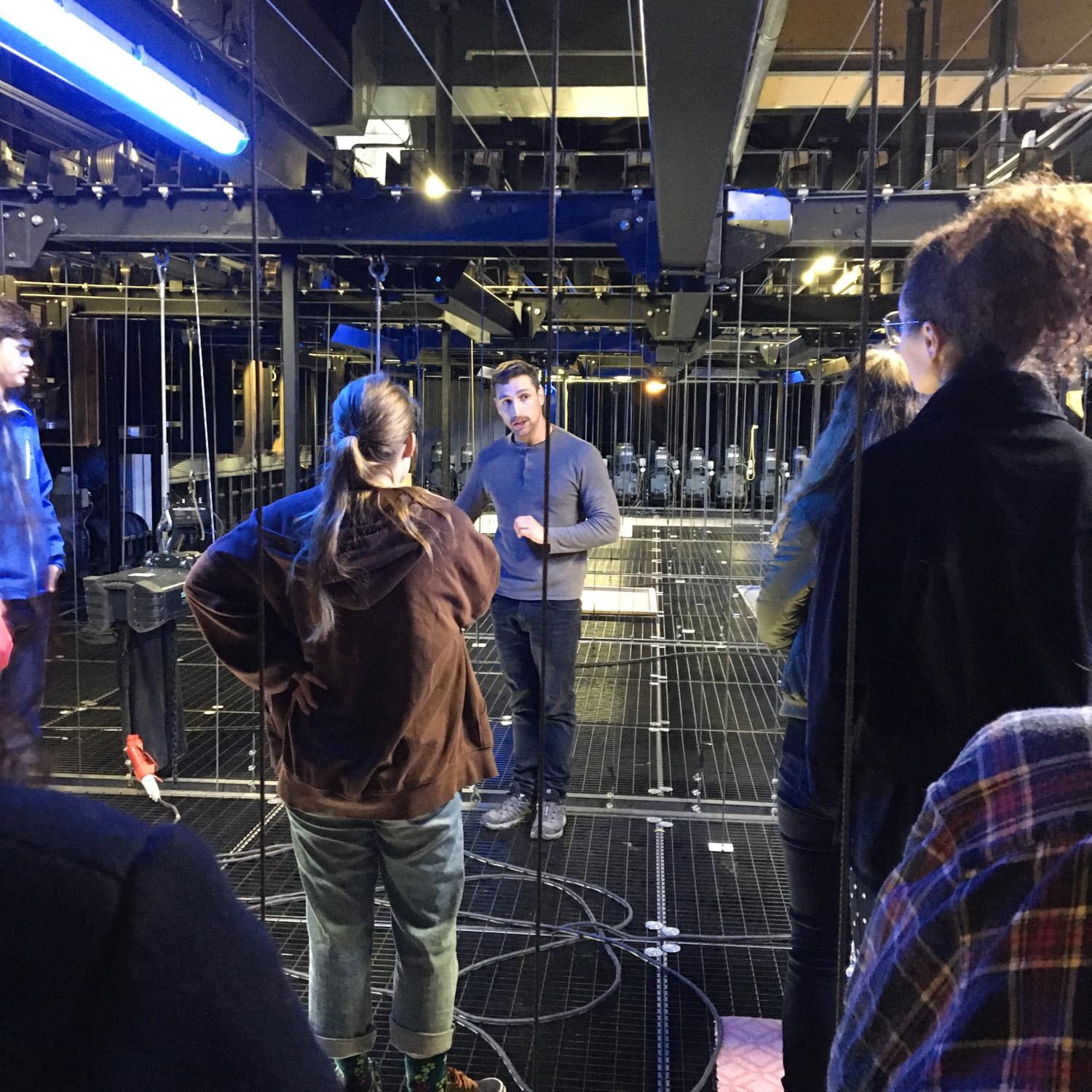DISCOVERING THE PROFESSIONS OF THE STAGE
Share
Just weeks before the beginning of rehearsals and the arrival of the first artists, the Passerelles department continued its opera awareness-raising programme by presenting the various professions of the stage. From 11 to 13 April 2023, 24 different groups — including adults and young adults in programmes for social and/or professional integration; and secondary-school, vocational-school, and university students — were invited on behind-the-scenes tours at the Théâtre de l’Archevêché, from the orchestra pit to the fly loft.
Our tour began on stage — which already contained the first elements of the Così fan tutte set — with a presentation of the work of the stagehand. The theatre was compared to ‘a large ship led by a band of pirates’ who labour together to move in the same direction. The metaphor is not far from reality, since the profession of the stagehand originated from that of the sailor. Like sailors, stagehands must know how to manipulate wires, poles and pulleys in order to move parts of the set, like the sails of a ship, and create the desired effects for the staging.
Our small group then moved backstage, in a labyrinth that leads to the orchestra pit. We could imagine the hushed atmosphere and excitement that fills these spaces on the performance nights, as the stage manager — the veritable conductor of the technical team — cues various crafts-men and -women (soloists, dressers, costumers, etc.), who cross paths in the silence as they carry out their allotted tasks.
Next, we stopped several metres above the stage, where we learned more about the profession of the fly operators. Specialists in the rigging and the lifting systems, the fly operators manipulate moving elements of the theatre according to extremely strict safety protocols. The Festival d’Aix differs from other festivals in that two operas are programmed in the same venue on alternate nights. Thus, during any one performance, the sets of the production for the following evening must remain hidden: they are said to be ‘drying’ as they hang vertically up in the fly system, invisible to the audience.
We returned to terra firma for the final meeting point, where we learned about the professions of the lighting engineer and the lighting director, whose work is likewise vital and fascinating — for ‘without light, there is no performance!’ The chandeliers of yesteryear, whose candles needed to be changed during intermission, were replaced long ago by projectors, thus allowing for a multitude of effects. The lighting is coordinated hand in hand with the stage director and the set designer well in advance of opening night. To create luminous scenes in an outdoor venue like the Théâtre de l'Archevêché, tests must be conducted late at night.
From 4 to 24 July, come join the audience at the Théâtre de l'Archevêché to experience this great machine at work!
LEARN MORE ABOUT THE INITIATIVES OF THE PASSERELLES DEPARTMENT


